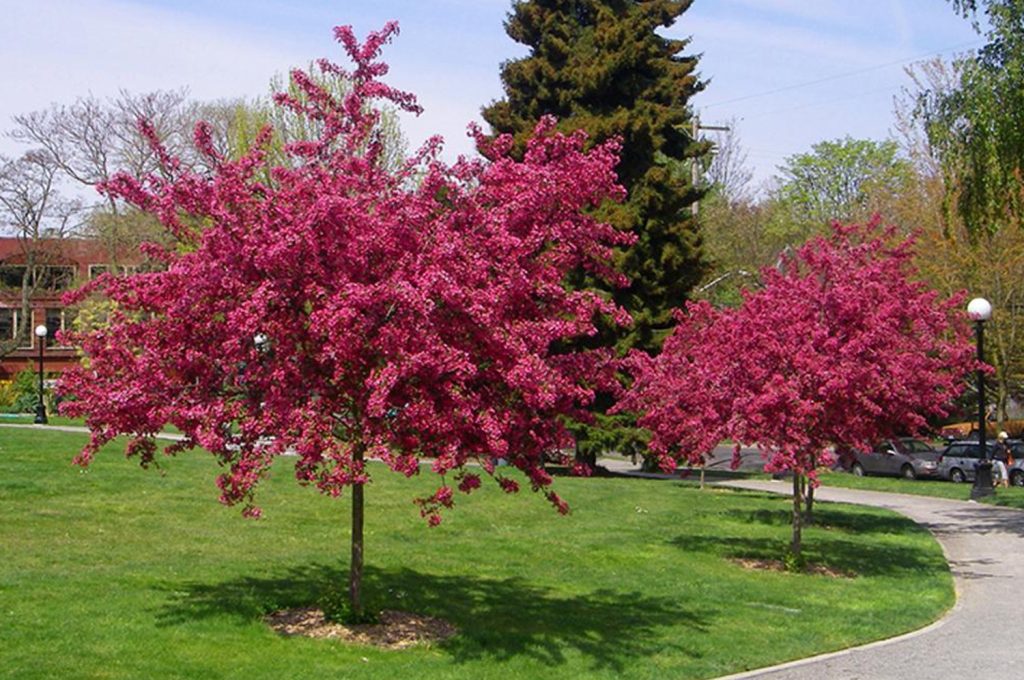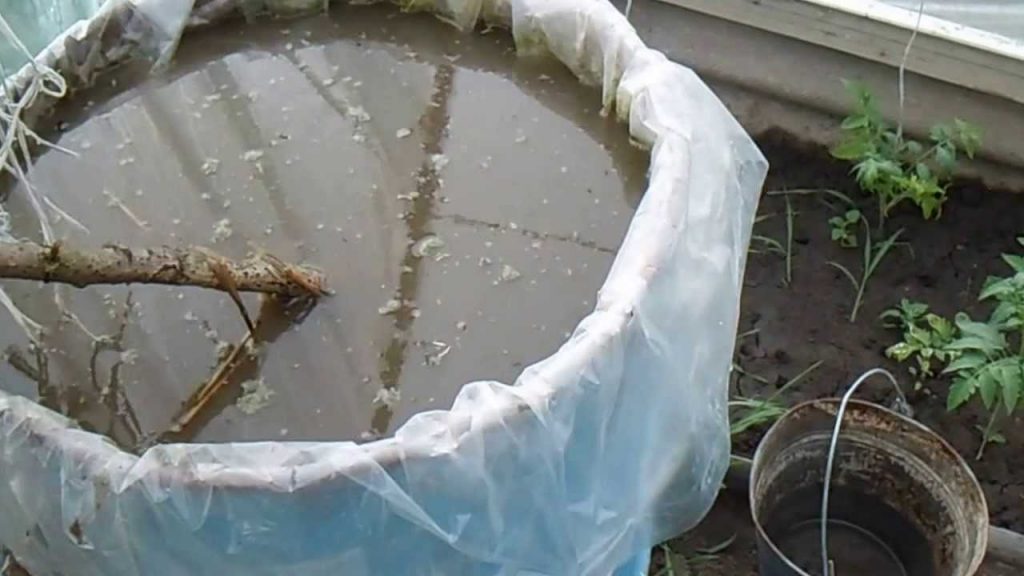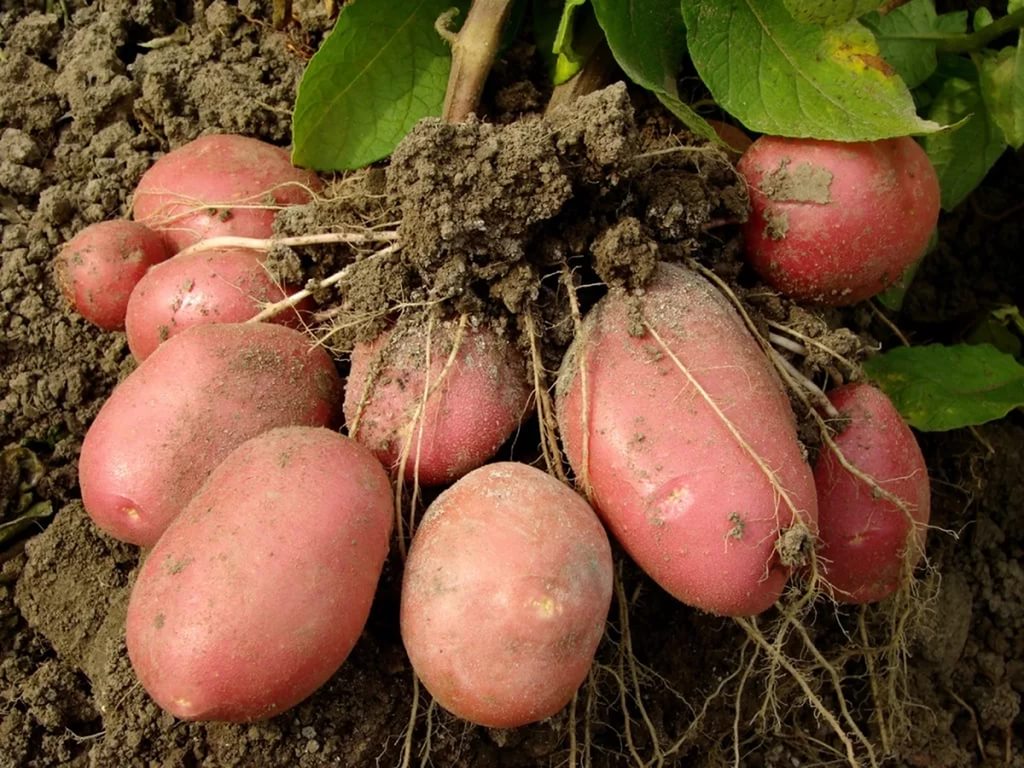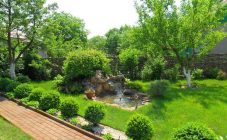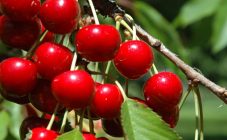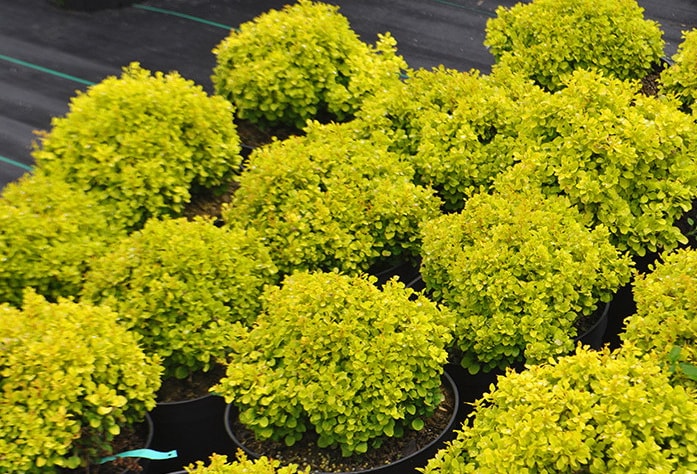Content:
From the moment the species was discovered until today, the hawthorn attracts the views of others, charming with its unique, lush flowering. Hawthorn Paul s Scarlet looks great as a flower bed and garden decoration. This article will consider the description of the variety, the rules for growing hawthorn and caring for it, pests and diseases that pose a danger to this plant.
History of creation
For the first time the cultivar Paul s Scarlet - common hawthorn - was seen in 1850 in Herefordshire Gardens. In 2002 Paul Scarlet received the Garden Merit and was also awarded a first class certificate. Hawthorn is found both as a shrub and as a single plant. This is influenced by the nature of the pruning. Paul Scarlet is the most popular variety of hawthorn in the rose-flowering family.
Features of hawthorn and description of the cultivar Paul Scarlet
It is noteworthy that the plant has fruits, but it is not so easy to detect them, since they are formed quite rarely and in small quantities. The leaves are dark green, the plates are large. The hawthorn can reach a height of five meters. The shrub is a fast-growing tree that grows on average up to 20-25 centimeters annually. Fresh stems are covered with small spines, painted in a red-burgundy color. Hence the second name of the Paul Scarlet variety - prickly hawthorn.
Burgundy inflorescences with velvet petals make up the main charm of Scarlett hawthorn. Flowering begins in mid-May and ends in late June. As a result of flowering, reddish-brown fruits are formed, resembling small apples in appearance. They appear at the end of summer and are quite rare.
Reproduction of hawthorn occurs with the help of seeds, layering, root suckers, cuttings and grafting. The main method is seed.
Growing and care
In terms of planting, the hawthorn Paul Scarlet is absolutely unpretentious. For a lush active flowering, the shrub requires loose soil and exposure to direct sunlight. In the shade, the flowering rate will decrease significantly. Before planting hawthorn, you need to prepare the soil:
- Dig a shallow planting hole - the root collar of the plant after planting should be located above the ground.
- Fill the bottom of the pit with rubble, and sprinkle it with sand on top (the thickness of both layers is 10 centimeters).
- Mix the earth, which the seedling will be sprinkled with, with peat, humus and sand, adding a little lime to the resulting mixture (40 g will be enough).
Fertilizers
In the spring, the plant must be fed, then the flowering will be abundant. When buds appear, the hawthorn is fertilized with diluted manure in the amount of 8-10 liters per tree. Water the bush with fertilizers should be at least once monthly, flooding the plant with plenty of water.
Care
In hot weather, the shrub is watered abundantly, but not more than once a month.The soil in the zone of the near-stem circle is dug twice a year, deepening no more than 25-30 centimeters. In autumn, as well as in summer and spring seasons, the land under the bushes is cleared of weeds and loosened after each watering. Once a year, the soil is fertilized with peat, the layer of which should not exceed five centimeters.
Pruning
In the spring, dried and diseased branches are removed, damaged ones are cut off. The shrub can be trimmed and easily tolerates these procedures. The regeneration of the shoots occurs very quickly, so it is allowed to prune more than twice a year. Quite often, by pruning, the shrub is given various outlandish forms.
Pests and diseases
Hawthorn Paul Scarlet is susceptible to parasites, the most common of which are:
- spider mite;
- weevils;
- scabbards;
- aphid.
Among the dangerous diseases are:
- powdery mildew;
- clasterosporium disease;
- rust;
- anthracnose.
For effective protection against pests and diseases, it is necessary to treat the plant with fungicides (Skor, Horus, etc.). In spring and summer, the bush is sprayed with insecticides (Match, Engio). For the protection to be as effective as possible, it is important to correctly determine the cause of the disease and select the appropriate drug.
Wintering
The shrub is not a frost-resistant plant, so in winter, buds and shoots will freeze up. For this reason, young trees should be sheltered during severe cold weather, while not only the branches of the bush, but also the trunk should be insulated. The latter is recommended to be covered with a thick layer of paper or burlap.
Advantages and disadvantages of the variety
Among the positive qualities of Scarlet hawthorn are:
- flawless appearance due to lush flowering;
- wonderful smell coming from flowers;
- undemanding shrub in terms of planting and caring for it;
- the possibility of its application in landscape design;
- the use of the plant in folk medicine.
Among the disadvantages of this variety are:
- low frost resistance;
- susceptibility to disease and poor resistance to pests.
Hawthorn in landscape design
Given the impeccable appearance and unpretentiousness of the shrub, it is often used in landscape design, in particular:
- Form a green hedge.
- Planted along the curbs.
- Flower beds are decorated.
- Rockeries are created.
- Alleys are decorated;
- They make flower and garden compositions.
- Strengthen the coastal part of the artificial reservoir.
- Grown as a single plant, which serves as a great decoration for the garden.
Hawthorn in folk medicine
The benefits of the plant in this area are beyond doubt. Tincture prepared on the basis of hawthorn will be especially useful for elderly people.
The beneficial effect is as follows:
- hawthorn improves heart function, strengthens blood vessels, stimulates blood flow;
- serves as the prevention of many diseases, is recommended for chronic fatigue, stress and overwork;
- lowers blood cholesterol levels;
- has diuretic properties, is useful for inflammation and kidney stones;
- helps to fight insomnia;
- recommended for use during the rehabilitation period after serious illness;
- inflorescence infusion is used to treat atherosclerosis and angina pectoris;
- helps with dizziness;
- the extract is effective against the herpes virus;
- hawthorn decoction helps with gastrointestinal upset, shortness of breath and fever, it is also prescribed for women with the onset of menopause.
To prepare decoctions, extracts and infusions based on Pauli's hawthorn, various parts of the plant can be used:
- fruit;
- leaves;
- inflorescences;
- bark.
It is necessary to take such a remedy for a long time, while observing the dosage recommended by the attending physician.
For the preparation of medicines from hawthorn, dried parts of this plant are used. It is allowed to store them for two years and no more.
Recently, the word "hawthorn" has been heard by many - dozens of channels and newspaper offices covered the news of a mass poisoning with a fatal tincture. That is why it is very important to understand that treatment with such drugs is carried out only in agreement with the doctor and in full compliance with all instructions and recommendations.
Hawthorn Paul s Ccarlet is great for decorating garden and backyard plots, without requiring special maintenance. Hawthorn Pauls scarlet will delight owners with its abundant flowering and magnificent scent.
